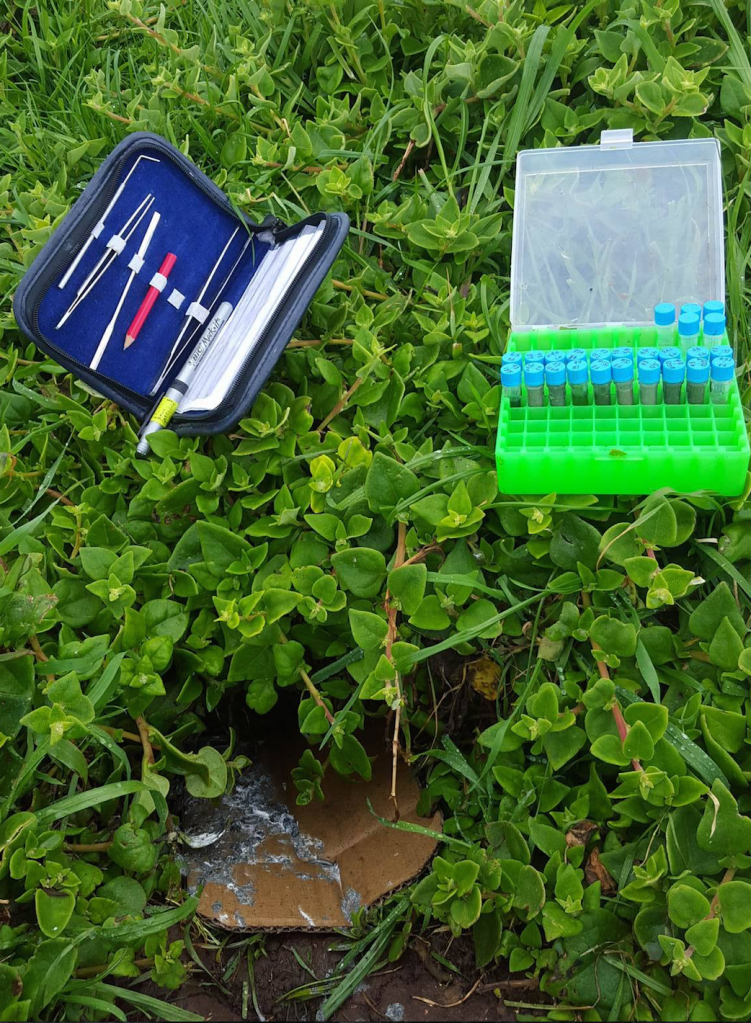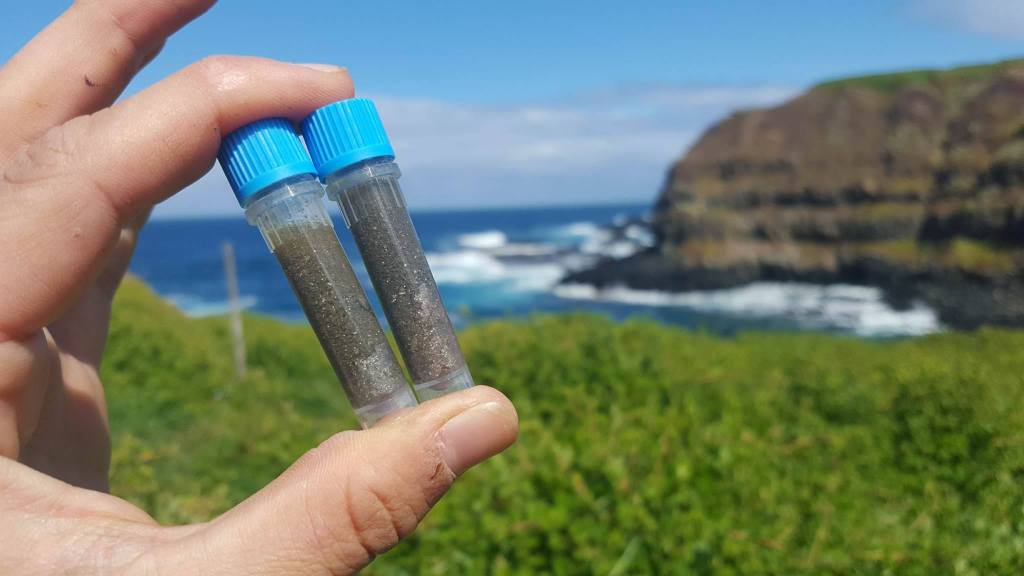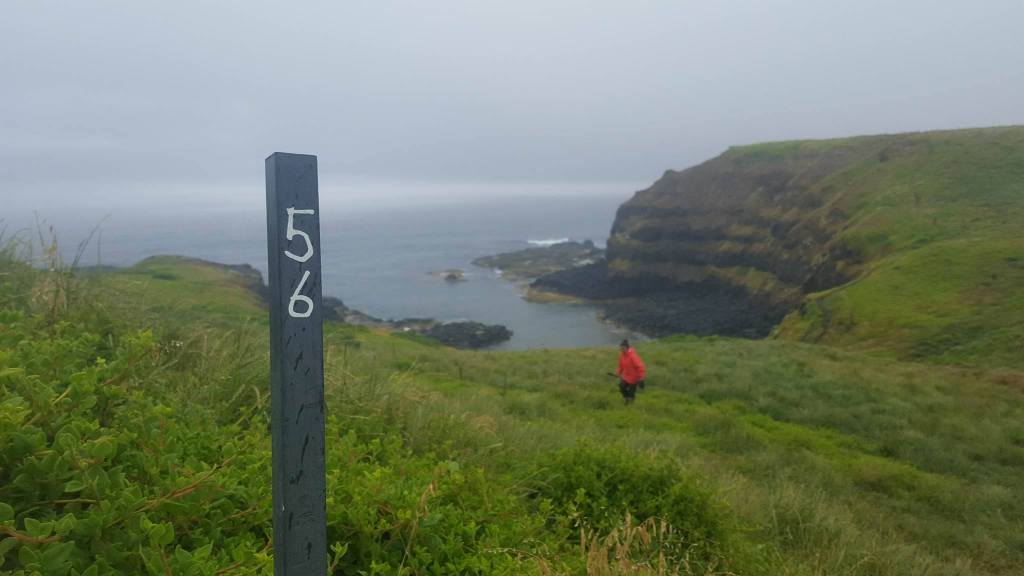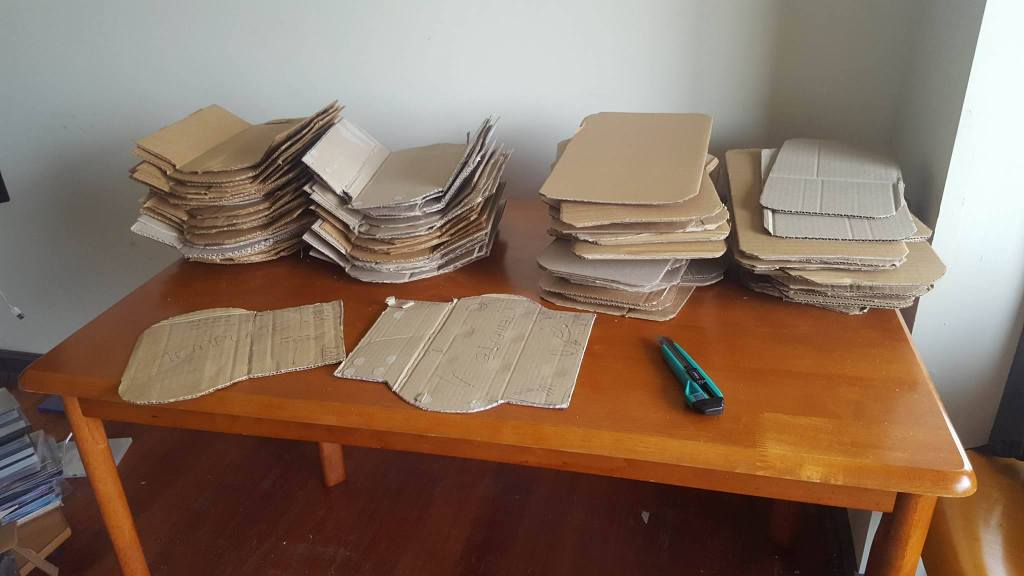Dr. Cathy Cavallo, Ecologist and Science Communicator for Remember the Wild, discusses with us her recent publication, “Quantifying prey availability using the foraging plasticity of a marine predator, the little penguin”, a study she conducted as part of her PhD research with Monash University and Phillip Island Nature Parks. She further shares with us the importance of this work, along with some of the issues her team faced collecting fecal samples from penguins!

Credit: Sonia Sánchez
What is the background behind your paper?
Marine systems are changing so quickly, especially here in south-east Australia, where ocean temperatures are warming at around four times the global average and species distributions are responding. Measuring, understanding and mitigating that change is vital, but research at sea is expensive and logistically difficult. So top-order predators, such as seabirds, are often used as indicators to shed light on life beneath the waves. However, relationships between environment and seabird life-history aren’t always straightforward, because many seabirds buffer the effects of environmental change on themselves and their offspring through foraging plasticity – changing the way they forage. This confounds attempts to monitor prey resource availability through monitoring seabirds at their nesting colonies. To use seabirds as environmental indicators, we need to directly measure multiple aspects of foraging ecology to remove the ambiguity caused by their foraging plasticity.
What’s your paper about?

Our team at Phillip Island Nature Parks and Monash University want to employ little penguins to help us understand their foraging environments on the continental shelf of southeast Australia. The trouble is, there is a bit of a language barrier! So instead of interviewing the penguins in our sites, we used automated weighbridges to record each microchipped penguin’s identity and mass and the time as they exited and re-entered the colony for each fishing trip. Over two breeding seasons (about six months each), we combined these data with dietary information from weekly scat samples collected from the entrance of penguin burrows. Genetic analysis using faecal DNA-metabarcoding allowed us to determine what species of fish the penguins were eating, as well as providing an estimate of the proportion of each species in the diet.

We used these data to create a weekly index of catch per unit effort (CPUE) analogous to that used by fisheries. In fisheries science, CPUE is a critical index because it accounts for varied fishing effort when making stock assessments. Here, instead of boats, we used little penguins as our sampling machines! Using the prey-specific diet data, we could estimate how much of each species the penguins were catching (grams) for each day spent at sea – our unit of effort. We were also able to convert this to an estimate of the biomass extracted from the ecosystem by the Phillip Island mega colony of ~ 32,000 penguins – about 1300 tonnes across both seasons combined!
Little penguins are opportunistic predators, so we weren’t surprised to find that the fish component of their diet was very broad. However, we were interested to see that in the first half of each breeding season, a single prey species dominated the diet, and that a different prey species was dominant in each year without any effect on the penguins’ breeding outcomes. We estimate that the penguins’ consumed ~219 tonnes of sardine in the summer of 2015/16 and ~215 tonnes of red cod (likely very small ones) the following summer (2016/17).
How is your paper new or different from other work in this area?

Previous studies have developed measures of resource availability, or even CPUE, from seabirds. However, because historically it has been difficult to obtain large quantities of detailed dietary information over fine-temporal scales, most have been restricted to specialist predators that eat only a few species. Our method makes it possible to include generalists, which present a problem to previous CPUE methods because they introduce another level of flexibility through their capacity to switch prey items. Monitoring the diet of generalists presents an immense opportunity to develop a picture of the marine ecosystem, at least as far as their broad diet goes, much like how eDNA is currently being used in marine environments. As an added bonus, our method also has the potential to estimate quantities rather than only indicate what is present. So we can use these birds to investigate the food-web below!
What does your work contribute to the field?
Our intention was to develop a method that could be adopted by other seabird researchers or colony managers to monitor resource availability for threatened predators. Our method has the capacity to enhance foraging estimates in food-web models and provide information to facilitate true ecosystem-based fisheries management in areas where seabird foraging areas and important fisheries overlap.

For us, this study provides the baseline for an ongoing CPUE time series to monitor the little penguins’ marine environment. Having addressed the terrestrial threats to this recovering colony, understanding and tackling threats in their foraging environment is the next step in protecting these inshore predators and the marine ecosystems they rely on.
Does this article raise any new research questions?
The key next step is to validate the method using independent prey sampling or stock assessment, which, unfortunately, we could not do during our study. The next step is then to adapt the method to other sites and species. We would be very interested to see this method trialed with nest-based weighing systems for flying seabirds.
Did you have any problems setting up the experiment/gathering your data?

Of course! Would it be ecology if not? Most of our issues were centered around the non-invasive collection of faecal samples. As they say, you can lead a penguin to the cardboard, but you can’t make it … you get the picture. Some seabirds will defecate upon handling, and since we had to weigh the birds and their chicks each week, we thought they would provide us with a sample if we just worked with them over a plastic mat. Unfortunately, little penguins aren’t interested in defecating on command. So, each week we painstakingly cut up one hundred “poo mats” out of thick cardboard to peg in the entrance of burrows, to collect the spray (poo) of a burrow’s inhabitant. We did trial washing and reusing plastic mats, but found the materials we used couldn’t stand up the conditions. Once we had settled on the cardboard method, we invariably had issues with samples being ruined by rain and penguins trampling sand and soil through the samples, and many, many cases of penguins missing the target!
What is the best thing about being an ecologist?

The best thing about being an ecologist is being able to formally test the questions you have about the way life fits together. And being able to do that in the field! A field study brings with it its own challenges, particularly for data analysis, but spending time out in nature, in an environment I am curious about, is one of the reasons I became interested in science.
One thought on “Cathy Cavallo: Penguin-derived CPUE to monitor inshore ecosystems”